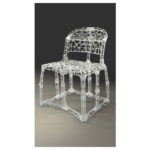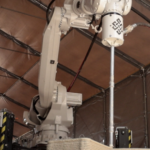With food printing taking up various roles in the culinary world, we’re seeing it grow in applications. From bakeries to doctors, everyone’s getting a slice of the printed pie nowadays. So, it’s no wonder that a school has been offering additive manufactured meals to their students. While the school only implemented this program for a special fair highlighting the joy STEM fields, it’s an interesting topic nonetheless. Can machine-crafted school lunches thrive in the future?
St Helen’s Primary School in Chargeable Lane (London) has been trying to get it’s students to take an interest in the STEM subjects through an event organised by the Big Bang Fair. The nutritious meals matched the theme of STEM topics from various, multi-ingredient purees. The cuisine at the event featured geometric fish and chips, space broccoli and fibonacci spiral squash.
Claire O’Sullivan from St Helen’s commented “we were delighted when The Big Bang Fair approached us to be part of the 3D printed school dinners project. Demonstrating STEM in this way is a fantastic opportunity to allow our pupils to see innovative technology first-hand.”
Can Food Printing Benefit School Lunches?
The next Big Bang Fair will run from March 13 and 16 next year at the NEC in Birmingham. Events such as these definitely raise the awareness of new technologies and get kids interested. While at the fair, researchers found 71 per cent of students thought it was crucial to have access to cutting-edge technology like 3D printing in schools.
However, one has to wonder, how would 3D printed meals benefit schools? While they can certainly tie into science topics and make fun shapes that might intrigue younger kids, there are also the benefits they can provide to student with oral difficulties and other disabilities, much in the same way they help old people with dysphagia.
Food printing also allows benefits associated with health and nutrition. Many food printers and companies are looking to leverage the technology for healthy diet promotion already. Perhaps food printing could provide one such avenue. We know that it can be cheaper and more efficient in the long-term, so perhaps schools might be able to save money as well.
Featured image courtesy of the Metro UK.









